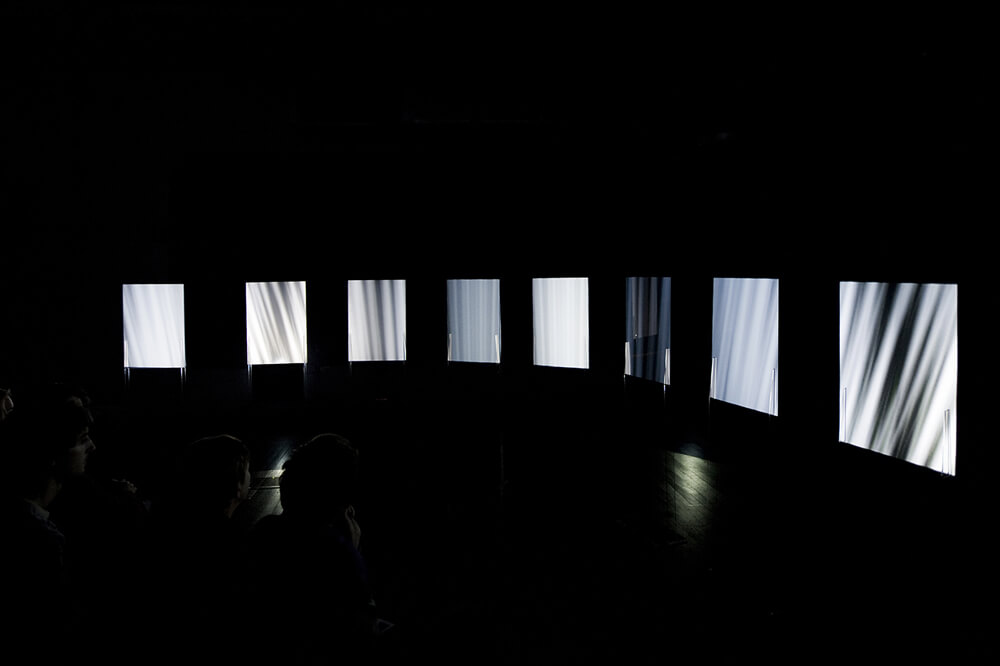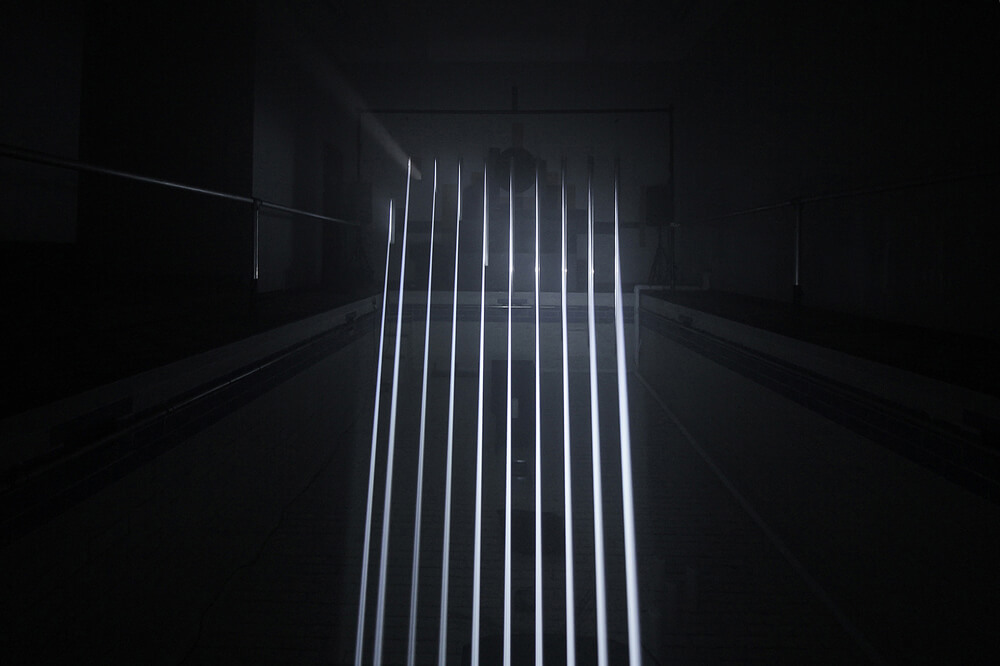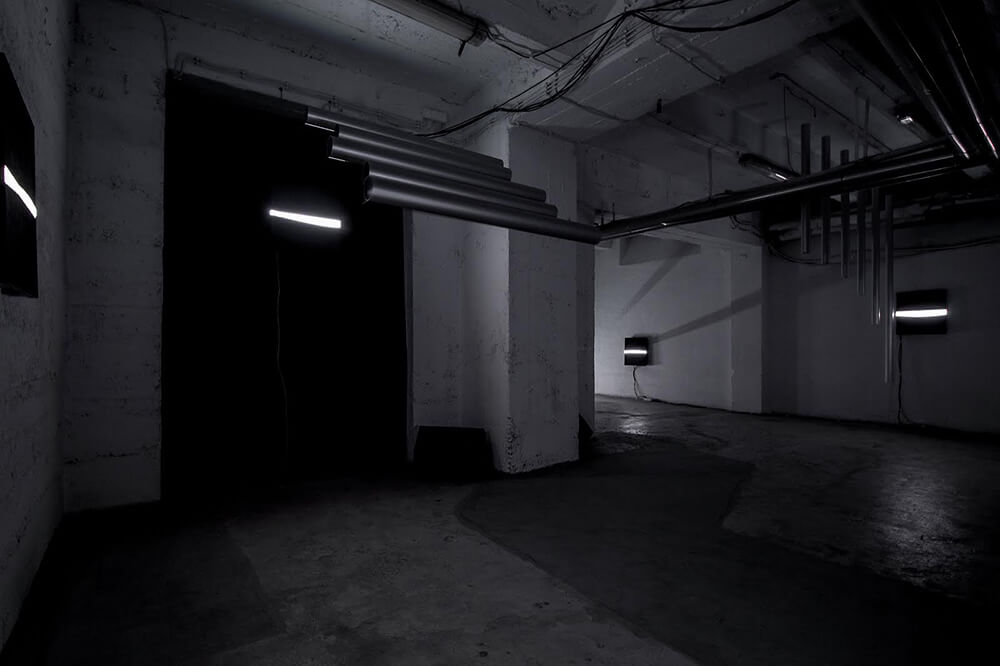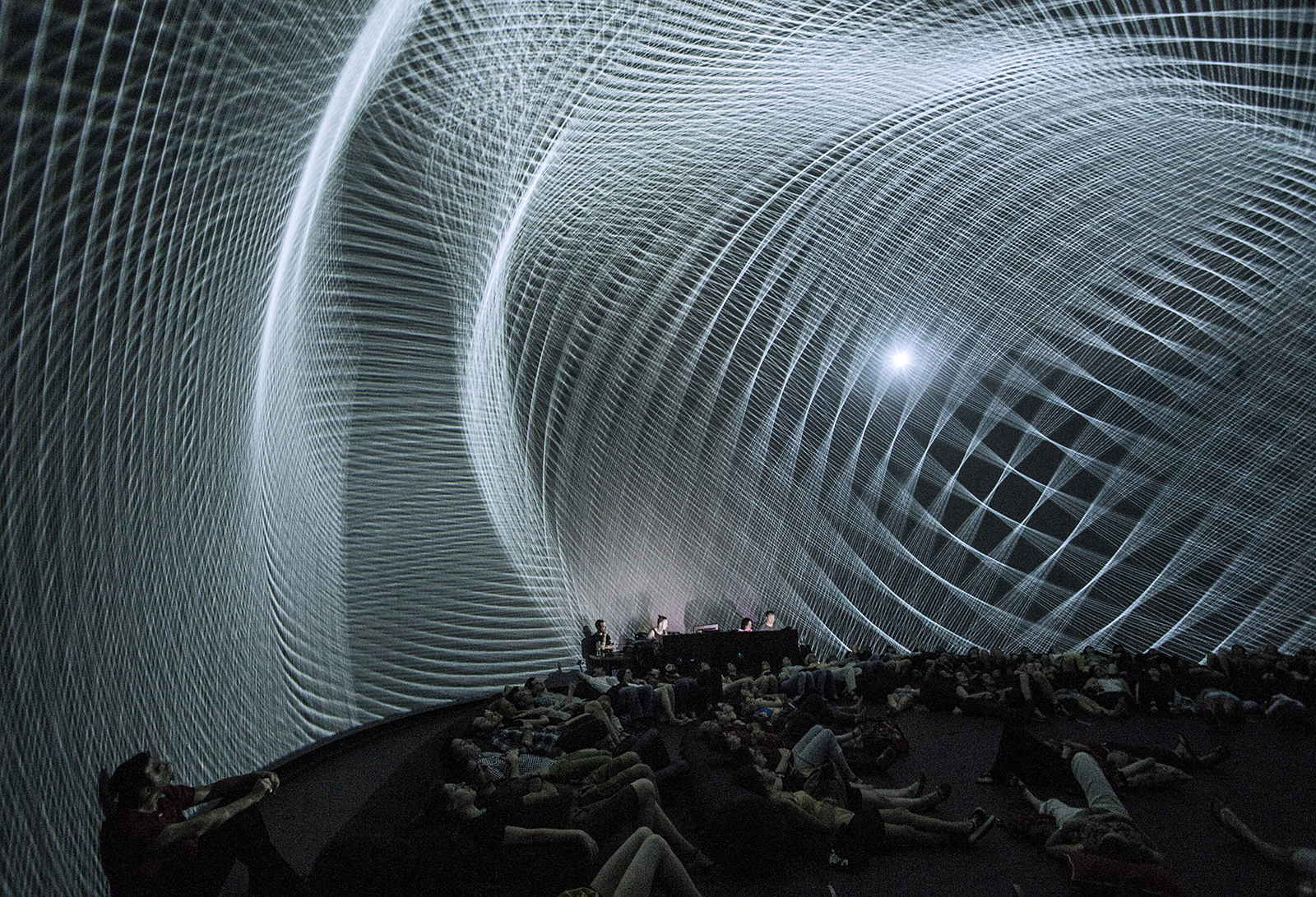Words by Ana Sancho

Textile design graduate Florence To creates architectural designs in space using light and shapes as the fabrics for her creations. As she grew interested in visual elements and live projections, she started to costume spaces using the three dimensions. Her audiovisual installations intend to create a live distortion of the mood and state of mind of the audience.
As a visual artist and art director, Florence has performed in renowned venues and festivals and along with some of the most renowned electronic musicians, such as Ron Morelli and Jlin.
In NOQTURNL, a multimedia installation resulting from a close collaboration with 4DSOUND creative director sound designer John Connell, elements of choreography organise the architecture of different spaces and have an emotional effect on the audience’s perception.
Most recently, she has been showing a new installation at Resonate, the annual new media festival in Serbia, gathering experts in technology, visual arts, and digital culture. EOAN is an intriguing sensory experience for the audience that investigates the repercussion of reflections and sound resonance on the spatial awareness of the participants.
Florence is currently undertaking a creative fellowship with the Department of Clinical Neuroscience in Edinburgh in association with New Media Scotland. Together with composer Alex Menzies, a frequent collaborator, they are centring their research on the influence of music on our brains. The research will culminate in an installation to be presented later this year where the acoustics of the spherical Dott theatres, the rooms where the surgical procedures take place, will play an important role.
In her artistic world of visual textures, Florence uses her explorations of light environments and soundscapes as the means to create a sensory connection between the spectator and space. We look forward to seeing where her next journey will take us.


What drove you to explore space through light and visuals? Or where does your inspiration come from?
I previously studied and worked in textiles specializing in embroidery, but throughout my studies, I became more focused on tailoring. Even though I’m presently working with the medium of light and space, it is still coherent with how my process has developed. Before, I use to construct patterns for the human body; now, I construct patterns with architectural space.
I was more interested in working with how to process techniques in different ways, and a lot of that came from playing around with form and dimensions. I was quite stubborn during my studies when we were told to research other artists’ work and recreate their process, whereas I wanted to create my own inspiration. Through photography, I could visualize more organically how I could manipulate lines, colour, and structure by re-organizing what I would see in my everyday environment. In my final year in textiles, I began working with how light and shadows play with each other on tailored clothing and how that could alter the dimensions of the clothing itself as well as with normal everyday light.
When the recession hit, it became difficult to survive working in the fashion field, so I moved back to Glasgow from London in 2008, working a part-time job and freelancing in tailoring. This is where I started getting more involved with music, working with light and visuals. As these things go, I became a bit obsessed with trying to reconstruct the forms in a less familiar medium.
What do you expect from the viewer that interacts with your performances? Do you expect to create synesthetic experiences in your audience?
I don’t usually try to steer the viewer to interact in a certain way. My process is to put attention to how much information I am presenting in the performance and how I can create an emotional transition by using different proportions of light intensities, reconstruction of the architectural space, and also working with sound frequencies.
My performance installations are quite similar when preparing a screenplay; I would create different scenes and work with the composer to create an emotional situation. Within the transitions of each scene, there is also an emotional transition. There is a lot of psychology involved in my projects, especially how light and sound can work together to intensify and release those tensions in performances.
A connection with the audience, space and performer is then created, which is my main intention; working in this process leads to something more visually abstract without having to preconceive the design.
You’ve incorporated some scientific concepts for some of your projects, like the idea of dark adaptation on photoreceptors by Biophysics Professor Selig Hecht. Where does your interest in science come from? and how do you incorporate it into your practice?
I’m interested in understanding different types of emotions and what triggers them in order to create a deeper engagement with the audience, such as looking into how our mind perception works and in what detail we can see and feel within a ‘space’. I also look towards philosophy to objectify manners of concepts, which also helps create an unpredictable and abstract result.
The process is much more important than the outcome of my work as it leads to learning new forms of information, which takes a life of its own rather than having too much control over the final outcome. I’m interested in how we see detail, how the mind naturally takes apart specific types of information and relations to objective and subjective forms, and also other variables such as colours, motion, and vibrations.
When researching concepts for performances and installations relating to space, psychology comes first as using the finer details to create the story. I am quite objective about my work, but when it comes to incorporating live performance, it becomes subjective in understanding better how to engage with space and people together. There has to be a type of vulnerability when it comes to engagement between the different factors in the performance and presentation of an installation.
What has been your most challenging project?
I don’t tend to think of projects as challenging; each project is different, especially in collaborative work, because there is more dynamic communication. In any sense, it would be understanding which project had a bigger impact on the thought process and getting out of your comfort zone. Working on Etanan in my collaborative project COV with Alex Menzies was quite different to our usual way of working.
We had built a sound instrument to work with the resonance of an old Edwardian swimming pool, which involved cutting up metal tubes and measuring the frequency vibrations to create a desired microtonal scale that could work with the psychoacoustics of the space. The hard surfaces reflected the pitch and changed the tones constantly to get it right took a few tries. Even though it provoked another sense in our working patterns, it also brought out new ideas and questions, also marking a new direction in our thought process, which was much needed.
Where do you see taking your work into?
I would like to explore further modular installation working with sound resonances and how that engages in a public space but for a longer period if it is in a disused space or gallery. My first installations were about using underground spaces, and it shaped my use of problem-solving skills and how I would approach them. I think it’s important to continue the history in your work process and understand what it is that still needs to be explored.
What is your chief enemy of creativity?
Time is my enemy; as you get older, you learn to work faster, but when you know the potential that could be put into certain types of ideas, there is never enough time. However, the pressure is also good; I’m quite efficient at working under a deadline.
You couldn’t live without…
At times I do think about giving up all my belongings and see what would happen, I would definitely embrace a change.






